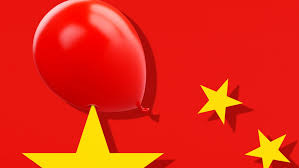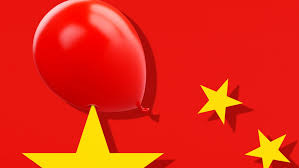
According to data released on Saturday, China's consumer prices stabilised in August while factory-gate price cuts slowed as deflationary pressures eased amid signs of economic stabilisation.
However, analysts claim that in light of a sluggish labour market recovery and uncertain household income expectations, additional policy support is required to maintain consumer demand in the second-largest economy in the world.
According to the National Bureau of Statistics, the consumer price index (CPI) increased by 0.1% in August compared to the same month last year, which was less than the median prediction of a 0.2% increase in a Reuters survey. The CPI dropped 0.3% in July.
Core inflation, which does not include the cost of food and gasoline, remained constant in August at 0.8%.
Following a decrease of 4.4% in July, the producer price index (PPI) decreased by 3.0% from a year earlier, in accordance with predictions. The manufacturing price decline was the smallest in the previous five months.
"There is a bit of improvement in the inflation profile. In the meantime, the PPI deflation appears to be narrowing, pointing to a slow and moderate restoring process," said Zhou Hao, chief economist at Guotai Junan International.
"In general the inflation (rate) still points to weak demand and requires more policy support for the foreseeable future."
According to the agency, food prices decreased by 1.7% year over year while non-food costs increased by 0.5%, driven primarily by rising tourism-related costs.
Recent floods have harmed rice and maize crops in China's important northern grain belt, raising concerns about domestic food inflation while customers across the world experience tighter food supplies due to the conflict in Ukraine.
"Both CPI and PPI are likely to show modest improvements in the fourth quarter," said Luo Yunfeng, an economist at Huajin Securities.
The CPI increased by 0.3% from the previous month, up from 0.2% in July, according to the statistics bureau.
Due to the impact of inclement weather in some locations, pork prices increased 11.4% month over month, compared to July when they remained unchanged. They decreased from a 26% decline in July to a 17.9% decrease from a year earlier.
According to the statistics office, increased demand for some industrial goods and rising global crude oil prices slowed factory-gate deflation in August.
The rapid inflation most other major countries have seen since the COVID-19 pandemic subsided, prompting their central banks to quickly hike interest rates, stands in stark contrast to China's anaemic pricing movements.
Since Japan's last negative headline CPI reading in August 2021, China was the first member of the Group of 20 affluent countries to record a year-over-year fall in consumer prices in July.
As policymakers work to boost demand and ward against deflation, August trade statistics revealed that China's exports and imports both narrowed their falls. This data joined a string of other signs signalling a potential stabilisation in the economic crisis.
"With early signs of growth stabilisation, we see deflationary pressures easing, a trend reflected in higher commodity prices in August," ANZ analysts said in a note.
Beijing has announced several initiatives in recent months to support growth, like as lower mortgage rates and last week's relaxation of borrowing restrictions to support homebuyers.
According to Bruce Pang, chief economist at Jones Lang Lasalle, China's central bank may keep lowering interest rates and the percentage of reserves that banks must hold.
China is anticipated to meet its 5% growth target for 2023, according to Premier Li Qiang this week, but some analysts think the goal would not be met because of a deteriorating real estate market, weak consumer spending, and declining credit growth.
(Source:www.investing.com)
However, analysts claim that in light of a sluggish labour market recovery and uncertain household income expectations, additional policy support is required to maintain consumer demand in the second-largest economy in the world.
According to the National Bureau of Statistics, the consumer price index (CPI) increased by 0.1% in August compared to the same month last year, which was less than the median prediction of a 0.2% increase in a Reuters survey. The CPI dropped 0.3% in July.
Core inflation, which does not include the cost of food and gasoline, remained constant in August at 0.8%.
Following a decrease of 4.4% in July, the producer price index (PPI) decreased by 3.0% from a year earlier, in accordance with predictions. The manufacturing price decline was the smallest in the previous five months.
"There is a bit of improvement in the inflation profile. In the meantime, the PPI deflation appears to be narrowing, pointing to a slow and moderate restoring process," said Zhou Hao, chief economist at Guotai Junan International.
"In general the inflation (rate) still points to weak demand and requires more policy support for the foreseeable future."
According to the agency, food prices decreased by 1.7% year over year while non-food costs increased by 0.5%, driven primarily by rising tourism-related costs.
Recent floods have harmed rice and maize crops in China's important northern grain belt, raising concerns about domestic food inflation while customers across the world experience tighter food supplies due to the conflict in Ukraine.
"Both CPI and PPI are likely to show modest improvements in the fourth quarter," said Luo Yunfeng, an economist at Huajin Securities.
The CPI increased by 0.3% from the previous month, up from 0.2% in July, according to the statistics bureau.
Due to the impact of inclement weather in some locations, pork prices increased 11.4% month over month, compared to July when they remained unchanged. They decreased from a 26% decline in July to a 17.9% decrease from a year earlier.
According to the statistics office, increased demand for some industrial goods and rising global crude oil prices slowed factory-gate deflation in August.
The rapid inflation most other major countries have seen since the COVID-19 pandemic subsided, prompting their central banks to quickly hike interest rates, stands in stark contrast to China's anaemic pricing movements.
Since Japan's last negative headline CPI reading in August 2021, China was the first member of the Group of 20 affluent countries to record a year-over-year fall in consumer prices in July.
As policymakers work to boost demand and ward against deflation, August trade statistics revealed that China's exports and imports both narrowed their falls. This data joined a string of other signs signalling a potential stabilisation in the economic crisis.
"With early signs of growth stabilisation, we see deflationary pressures easing, a trend reflected in higher commodity prices in August," ANZ analysts said in a note.
Beijing has announced several initiatives in recent months to support growth, like as lower mortgage rates and last week's relaxation of borrowing restrictions to support homebuyers.
According to Bruce Pang, chief economist at Jones Lang Lasalle, China's central bank may keep lowering interest rates and the percentage of reserves that banks must hold.
China is anticipated to meet its 5% growth target for 2023, according to Premier Li Qiang this week, but some analysts think the goal would not be met because of a deteriorating real estate market, weak consumer spending, and declining credit growth.
(Source:www.investing.com)





